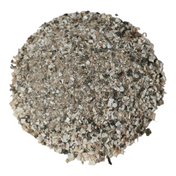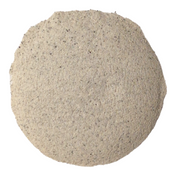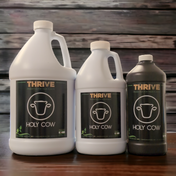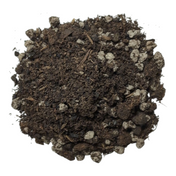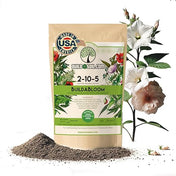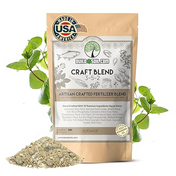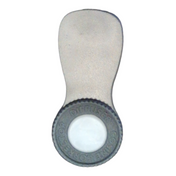Is P really that important? Does P kill Mycorrhizae?
You'll notice there are two Nutrient Kits available here at BuildASoil and the main difference is the addition of Fish Bone meal at 4-20-0 which is very high in Phosphate. The idea here is to make sure there is enough available P for the flowering phase of growth because P is normally a very challenging element for plants to get as it is fairly immobile in the soil. Most growers use a lot of P and there are a few reasons.
1. Phosphate is only 44% actual Phosphorus. So that big 20# on the bag of Fish Bone Meal is only about 8.8% phosphorus of which maybe only a fraction of will be available in the first season.
2. It's pounded into their heads from the hydro companies because P is an expensive ingredient and it's profitable to sell at high markups. The Bloom Booster market is massive.
3. Mycorrhizae is marketed to the consumer along with High P fertilizers as if they work even better together!
Enter Mycorrhizae and P uptake is dramatically improved as Fungi have been helping plants access P for a long long time. Now that we know a little more about mycorrhizae many farmers are being encouraged to use it because it will dramatically help reduce costs by avoiding expensive P fertilizers.
I was told that high amounts of soluble P will kill your Myco's and I'm still learning about this subject. The ClackamasCoots Nutrient kit has plenty of P in the Crustacean Meal, Neem Cake and the Compost/EWC etc. But many growers are wanting to add more P to this mix because they think adding more is better.
Below are some excerpts from http://www.lebanonturf.com/education/the-truth-about-phosphates-and-mycorrhizal-fungi
Phosphate Does Not Kill Mycorrhizal Fungi
Oddly, many people have erroneously concluded that phosphate kills mycorrhizal fungi. In fact, there is no killing effect going on here. Instead, in soils having high available phosphate, the host plant apparently opts to restrict fungal colonization. The fungi and their spores are still alive. They are simply experiencing a higher level of restrictions from the host plant. In fact, there is ample evidence to show that the host plant has significant control over when and where mycorrhizal fungi may enter root tissue. Theoretically, under conditions of high available phosphate, the restrictions are increased. So the levels of soluble phosphate in the soil can affect whether the host plant opens the door to the root widely or narrowly. But the mycorrhizal fungi are not killed by phosphates. This misunderstanding has been promoted by various companies who attempt to blend and sell mycorrhizal products with no real grasp of their biology.
So let’s correct the record regarding phosphates. Here is the real story:
- Phosphates, both available and unavailable forms, do not kill mycorrhizal fungi.
- High levels of available soil phosphate (soluble phosphates) result in reduced root colonization by mycorrhizal fungi.
- Insoluble phosphate does not affect mycorrhizal development. The insoluble phosphate in natural soils can represent as much as 99% of the soil’s total phosphate content.
Summary
In summary, mycorrhizal fungi and their host plants both need phosphates, and both work hard to accumulate this important mineral nutrient. But when soluble phosphates are abundant, the host plants tend to increase their restrictions to mycorrhizal fungi, resulting in lower levels of root colonization. So avoid applying high levels of soluble phosphates at the same time that you apply mycorrhizal fungi. Instead, consider reducing your total phosphate fertility, and spread your phosphate applications out more broadly.

